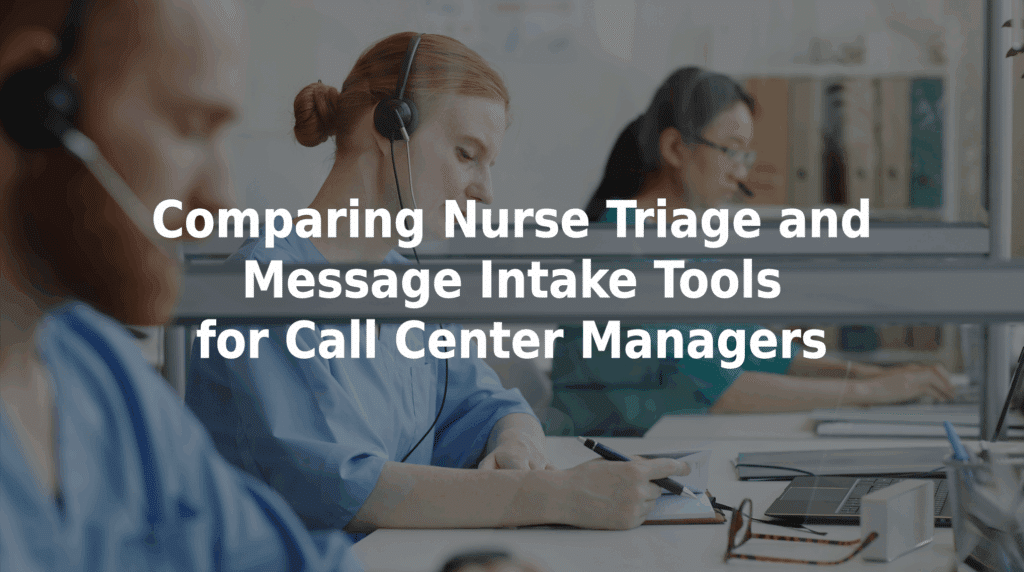Comparing Nurse Triage and Message Intake Tools for Call Center Managers
For medical call center managers, choosing the right tools to manage patient communication is crucial. While nurse triage and message intake often serve related functions, they fulfill very different roles. That’s why we’ve compiled a quick guide below for comparing nurse triage and message intake tools for call center managers who want to optimize their workflows, avoid costly errors and liability, and enhance their patient experience.
Understanding the Distinction
Both nurse triage and message intake tools contribute to better care coordination, but they operate at different stages of that care.
Nurse Triage Tools
These support licensed RNs who assess patient symptoms over the phone and determine the appropriate levels of care using clinical protocols.
Ideally, they include features like:
- Evidence-based symptom decision trees (e.g., Schmitt-Thompson protocols).
- Clinical integration with EHRs.
- Immediate decision support for urgent vs. nonurgent care.
- Documentation that can improve continuity of care and reduce practice risk.
Message Intake Tools
These can automated solutions provided to patients to gather their initial concerns before symptoms are evaluated and clinicians become involved.
The best tools feature:
- Structured templates for consistent data entry.
- AI-driven prompts to ensure key details are captured.
- Secure routing of information to appropriate staff.
- Early identification of red flags for escalation.
Why Both Tools Matter in a Call Center Setting
Call centers often rely on a combination of intake staff and clinical triage nurses. Having both systems in place — and knowing how they complement each other — can substantially reduce the amount of time it takes for patients to get answers to their medical questions and learn if they need to be seen. In turn, this offsets call volume and the burdens often experienced by nonclinical operators.
This what a typical workflow might look like.
A message intake tool like TriageLogic’s MedMessage Automate allows a patient to submit their own intake request, while using AI to prompt them with follow-up questions to clarify their symptoms.
A triage nurse receives the intake request and uses triage protocols to evaluate its potential severity.
Appropriate care instructions are provided or escalated based on the triage outcome.
Tool Comparison at a Glance
| Feature | Nurse Triage Tools | Message Intake Tools |
|---|---|---|
| User Type | Registered Nurses | Patients |
| Primary Function | Clinical symptom evaluation | Information collection and routing |
| Escalation Support | Built-in protocols | AI red-flag prompts |
| Compliance Requirements | High (clinical liability) | Moderate (HIPAA-focused) |
| Training Needs | Clinical expertise | None |
| Ideal Use Case | Complex or urgent calls | Routine questions or early intake |
How TriageLogic Supports Both Functions
For call center managers, TrigeLogic offers MedMessage Automate. It provides a self-service option for patients to submit their concerns via chat, reducing intake errors and ensuring complete documentation.
For clinical support, our Nurse Triage On Call service involves trained RNs using Schmitt-Thompson protocols to assess symptoms and direct patients to the appropriate levels of care.
Together, these ensure accurate patient requests are evaluated in a timely manner to improve outcomes and practice efficiency.
Let’s Talk About a Program
If you’re evaluating clinical tools like above, we want to help. Contact us today to learn more about a customized program and schedule a demo for your team.

